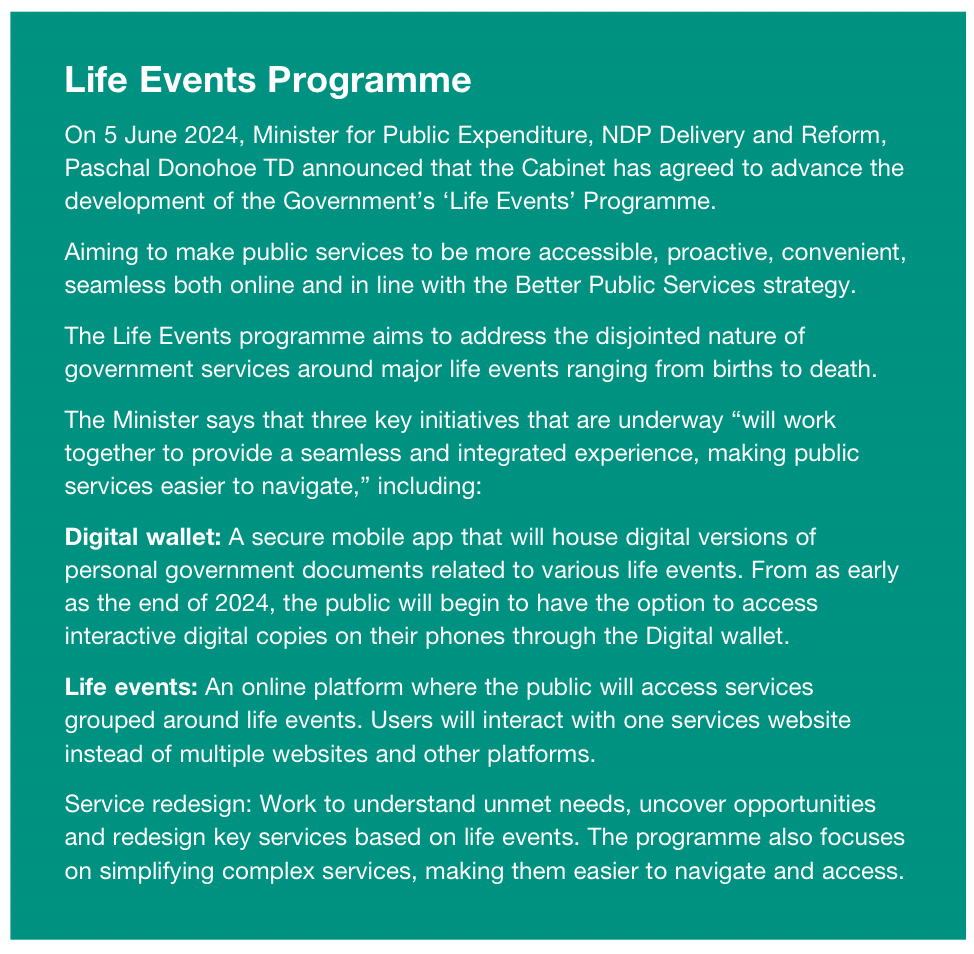Web 3.0: Driving digital public services

Government Chief Information Officer (CIO), Barry Lowry, discusses the role of Web 3.0 in driving digital transformation of public services.
Lowry believes that Web 3.0 will pose challenges and opportunities to the delivery of digital public services but, more broadly, will have an impact on every citizen, business, and government body.
Although multiple definitions of Web 3.0 exist, Lowry suggests the one he finds most accurate is as “the third phase in the evolution of the internet, characterised by decentralisation, ubiquity, and artificial intelligence”.
Mapping the scale of change that has taken place in the past 30 years from the emergence of Web 1.0, which was dedicated to users searching for data and made up of static pages connected to a system via hyperlinks, to Web 2.0, which is more focused on the principles of participation and broader contribution with multi-device access, Lowry says that Web 3.0 represents a move away from the centre.
“We have gone through a cycle where everything has been pushed into the centre, through things like hybrid clouds, but now everything is being pushed out again, driven by the Internet of Things (IoT). That will drive edge computing, edge clouds, and enable the integration of artificial intelligence.”
Two key phrases aligned to Web 3.0, which Lowry believes will present both challenge and opportunity, are:
Trustlessness: You do not need to place your sole trust in any one stranger, institution, or other third party for a network or payment system to function.
Permissionless: The users and developers of the network do not need permission from anyone to transact and use. Theoretically, anyone can use a permissionless network without access being granted by a centralized authority.
The evolution of Web 3.0 is happening in the context of the European Union’s move to put digital as central to delivery. Lowry describes the European Commission President Ursula von der Leyen’s State of the Union speech on 15 September 2021, which described digital as a “make or break issue”, as a major milestone.
Two particular pieces of regulation point to the recognition by the EU that digital government is going to be somewhat decentralised. Alongside the single digital gateway, the eIDAS 2.0 regulation is the enabler of the single digital wallet.
“In other words, it is the first step that Europe has made to say that the running of government is going to be decentralised into our own hands and pockets going forward. It is a real gamechanger for how every government service is going to be provided.”
Lowry is somewhat critical of the European Commission’s adoption of a new strategy on Web 4.0, believing that the EU’s desire to lead the conversation can often overshadow the requirement for substantial debate and understanding of policy creation.
“AI is a good example of this. The EU’s AI Act has gotten to a good place but the early iterations included elements that were not plausible. Similarly, before creating policy around Web 4.0, there needs to be an understanding of Web 3.0 and how it can deliver.”
Echoing concerns raised by Forrester’s Principal Analyst, Martha Bennett, in an article entitled Web 4.0? Let’s figure out Web 3.0 first, Lowry says: “Complete decentralisation is neither possible nor desirable. What we need is a constructive debate on what ‘decentralisation’ means and why certain central control points or trusted third parties may be unavoidable, not the pretence of ‘decentralised’ and the seemingly unthinking parroting of those claims.”
A further point raised by Lowry relates to the need to recognise and manage risks within Web 3.0. Using the assumption of Blockchain as a means to remove fraud as an example, he says: “Phrases like ‘known as the technology of trust’ just perpetuate the myths around the technology. Blockchains are not inherently more secure, and data on a blockchain is only trustworthy if one can be sure that it was truthful and correct at the time of recording.
“We need to set the controls right,” he states, “There needs to be a balance between a good user service, and a really secure, managed user service.”
Lowry says that this approach is central to Ireland’s advances in digital public services. The Digital Decade Policy Programme out to 2030 is underpinned by three key pillars of:
- cultural change: Recognising that an analogue public service is not suitable for a digital 3.0 world;
- EU regulatory adherence: Building on Ireland’s digital influence within the EU and maintaining that influence by acting as a leader in creating and implementing regulation; and
- achieving quick wins: Maintaining political support through demonstrating how the move from eGovernment, which was simply computerising manual process, to digital government, has enabled a rethink of services completely.
Lowry contextualises that often the public’s perception of digital government is centred on life events, which often require multiple public services. “Good public services will enable people to tell us their information once, where that information is managed and as a result, an environment is created whereby more services can be provided on the basis of that information. This approach is very much linked to the design principles for government launched at the start of 2023, which put the person at the core of everything we do.”
Concluding, Lowry points out that the Government is already embracing potential opportunities. At the end of 2023, a pilot scheme of the Government’s digital wallet was launched and includes four credentials.
“The early outcomes show the benefits that exist from the power of government verifying your identity, which can then be used for a multitude of things, is a gamechanger.”
The digital wallet pilot, while not mandatory, is expected to be extended to the wider public service and public across 2024.






